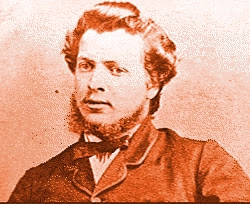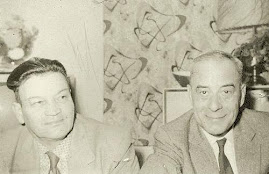On March 2, 2008 the Winnipeg Free Press Charles Huband published an article in the Winnipeg Free Press. We posted the article on the blog at:
http://metisbarefacts.blogspot.com/2008/03/land-claims-case-where-will-this-go.html
Here is the posted response from the MMF website: Please note the response is from MMF legal counsel Thomas Berger. http://mmf.mb.ca/index.php?option=com_content&task=view&id=505&Itemid=2
The Case for the Metis - Winnipeg Free Press Article
Huband argues land claim a lost cause -- we shall see
By Thomas Berger
March 29, 2008
In his article A Lost Cause? Metis running out of options in Land Claims case Charles Huband has done his best to show that the appeal by the Manitoba Metis Federation is indeed a lost cause. He rightly points out that the MMF represents 130,000 Metis people in Manitoba. Mr. Huband also says, I think rightly, that the MMF's case "is one of the most important to be decided by the Manitoba Court of Queen's Bench." This being so, those 130,000 Metis people deserve to know the true footing on which the appeal is going forward.
I suppose that everyone in Manitoba knows about the Provisional Government established by Louis Riel and the Metis at Red River in 1869. The Metis were, as the Supreme Court of Canada has held, Canada's negotiating partners in bringing Manitoba into Confederation. As a result of the negotiations between the delegates of the Provisional Government and Prime Minister John A. Macdonald and his colleague, Sir George- atienne Cartier, the Manitoba Act was passed in 1870. Since 1871, the Manitoba Act has been part of Canada's Constitution.
The MMF's case is based primarily on Sec. 31 of the Manitoba Act which provides that 1.4 million acres was to be distributed "for the benefit of the half-breed families" to the children of those families, all 7,000 of them (actually 6,993). This was a Metis land claims settlement.
Sec. 31 of the Manitoba Act 1870 is absolutely clear. It provides:"And whereas, it is expedient, towards the extinguishment of the Indian Title to the lands in the Province, to appropriate a portion of such ungranted lands, to the extent of one million four hundred thousand acres thereof, for the benefit of the families of the half-breed residents..."
Sec. 31 goes on to give the federal government authority to make regulations for dividing the 1.4 million acres "among the children of the half-breed heads of families residing in the province..."
Prime Minister John A. Macdonald, in introducing the Manitoba Act to the House of Commons on May 2, 1870, said of the land to be granted to the children, "this reservation, as I have said, is for the purpose of extinguishing the Indian title..." Macdonald went on to say that "The main representatives of the original tribes were their descendants, the half-breeds." He said, "Those half-breeds had a strong claim to the lands, in consequence of their extraction." George- atienne Cartier, who was Macdonald's closest colleague and conducted much of the negotiations with the delegates of the Provisional Government, told the House it was "for the purpose of extinguishing the claims of the half-breeds." Nothing could be clearer than these statements by Macdonald and Cartier.
Parliament recognized in Sec. 31 that the land grant was made as a step towards the extinguishment of Indian Title. It does not matter whether the Metis were Indians or not. Parliament recognized that, by virtue of their Indian heritage, they shared in the Indian title.
The trial judge, Mr. Justice Alan MacInnes, held that, notwithstanding the plain language of Parliament, not withstanding the clear statements of the House of Commons by Macdonald and Cartier, the 1.4 million acres was not set aside for purposes of the extinguishment of the aboriginal title of the Metis.
Now why is this question important? As I said, this was a land claims settlement. The Metis were to receive 1.4 million acres for their children. This would enhance the land holdings of Metis families and Metis communities. They would have a sure place in the heart of the new province.
Under Sec. 31 the distribution of the children's grants -- all 7,000 of them -- was under the complete control of the federal government. Neither the children nor their families had any say in the matter. This means that the federal government had a fiduciary duty to the children; Canada had to administer the grant in the best interests of the children. This is known in law as a fiduciary obligation, and is well understood in the field of aboriginal law as an obligation which arises on the extinguishment of aboriginal title.
The issue the MMF wanted the trial judge to decide was whether the federal government, given its fiduciary obligation, acted in the best interests of the Metis children in selecting, distributing and granting the 1.4 million acres. But having found that there had been no extinguishment of aboriginal title, he held that no fiduciary duty arose. But if he was wrong -- and the MMF will argue that he was -- the administration by the federal government of the children's grant will have to be considered by the Court of Appeal.Macdonald told the House on
May 2, 1870, that the grant of 1.4 million acres was "for purposes of settlement by their children."
On the same day, Cartier said the land was "to be given to the heads of families to settle their children." Macdonald told the House on May 4, 1870, that "No land would be reserved for the benefit of white speculators, the land being only given for the actual purpose of settlement".
These were solemn, considered statements by the two leading figures in the Government of Canada. They could not, consistent with their obligations to 7,000 children who were the beneficiaries of the grant, abandon this goal. In fact, this was explicitly acknowledged. On April 13, 1871, Cartier told the House:
"...a great many of those entitled to land were children. Until the children came of age the government were the guardians of the land, and no speculators would be suffered to get hold of it."
What was in the best interests of the children? The Metis lands were held by extended families, usually along the Red and Assiniboine Rivers. If, as the Manitoba Act said, the grant was "for the benefit of the families of the half-breed residents," the land to be distributed to the children would be grouped according to family. Instead, Ottawa ordered the land to be distributed by lottery in townships assigned to each parish. This meant the lands were scattered all over large areas of the new province. It would only be by chance that a family's land would be grouped together.
Then Ottawa delayed. As Mr. Huband says, "Years rolled by before the process was completed." Yes, indeed. It should have taken little more than six months to distribute the 1.4 million acres. Instead it took more than 10 years. The trial judge made a finding that the allotment of land among the children was not completed until 1880. Many of the grants were not issued for years after that.
Then there is the plain fact that 993 children did not receive a grant of land. Parliament said that each child was to receive a grant. The federal government had a complete census as early as 1870. Nevertheless, it managed to miscalculate the number of eligible children, so 993 were left out, receiving merely scrip instead.
Then there is the fact that Ottawa allowed the Manitoba legislature, once the Metis population had been marginalized, to pass laws that denied the same legal safeguards for the Metis children that it provided for non-Metis children, and hastened the transfer of Metis lands to speculators. The trial judge found that "no doubt some sales were made to speculators for improvident prices."
The federal government had a constitutional obligation to administer the distribution of the land in the best interests of the children. And it failed. That is, at any rate, the case for the MMF. The federal government and the Manitoba government will argue the opposite. The MMF may be successful, or it may not.
The MMF's object is to obtain a ruling by the Court of Appeal that Ottawa failed altogether in its constitutional obligations to the Metis. The Metis land claim settlement, provided for in the Manitoba Act, was undermined by the misconduct or ineptitude of the federal government. So it is time to reopen Metis land claims.
It is true that Louis Riel and the Metis believed they had a treaty with Canada. The MMF made that argument before the trial judge. But the MMF also argued that, even if there was no agreement enforceable "in the legal sense" (to use the trial judge's phrase) the Manitoba Act itself imposed an obligation on the federal government which had to be fulfilled. And it was not. The trial judge never reached this issue. The MMF will ask the Court of Appeal to consider it.
I do not wish to litigate this case in the newspapers. But the Metis people of Manitoba are entitled to know why the MMF is appealing and the true basis of the appeal.
A lost cause? We shall see.
Thomas R. Berger, O.C., Q.C.,
is counsel for the Manitoba Metis Federation
Wednesday, April 2, 2008
Then 27 Days Later there is a response
Posted by
MetisMama
at
6:58 PM
![]()
![]()
Subscribe to:
Post Comments (Atom)





No comments:
Post a Comment